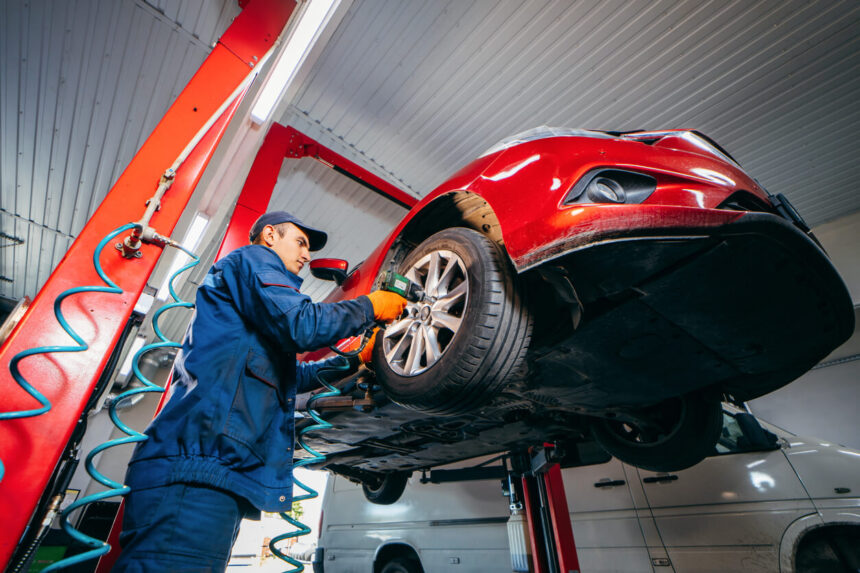Have you recently installed a vehicle lift in your garage, or are you considering getting one? How do you ensure the safety and longevity of this vital piece of equipment? Proper usage and maintenance of your vehicle lift are important for a safe and efficient garage experience. In this article, we’ll delve into the key aspects of using and maintaining your vehicle lift, ensuring you can lift your vehicle confidently.
Understanding the Basics
What are Car Hoists?
A car hoist, also known as a vehicle lift, is a device used to lift vehicles off the ground, providing easier access to the undercarriage for maintenance, repairs, and inspections. There are various types of car hoists, including two-post lifts, four-post lifts, scissor lifts, and portable lifts. Each type has specific uses and benefits but requires careful handling to ensure safety.
Importance of Proper Usage
Improper use of the hoist can lead to serious accidents, equipment damage, or personal injury. By following correct procedures, you not only protect yourself but also extend the life of your hoist. Understanding the weight limits, balance, and lifting points of your vehicle is essential to avoid mishaps.
Key Safety Tips for Using a Car Hoist
1. Read the Manual
Before using your vehicle hoist, thoroughly read the manufacturer’s manual. This document provides detailed instructions on the installation, operation, and maintenance specific to the model. Understanding these guidelines is the first step to safe and effective use.
2. Conduct Regular Inspections
Perform routine inspections to ensure that all components are in good operating order. Look for signs of wear and tear, such as frayed wires, fractured welds, or leaking hydraulic fluid. To avoid accidents, address any concerns as soon as they arise.
3. Understand Weight Limits
Every vehicle hoist has a maximum weight capacity. Never exceed this limit, as doing so can cause the hoist to fail. Verify the weight of the vehicle before lifting it and ensure it is within the safe range specified by the manufacturer.
4. Use the Correct Lifting Points
Refer to your vehicle’s manual to identify the correct lifting points. Using improper lifting points can damage your vehicle and create an unstable lift. Ensure the car is balanced and securely positioned on the hoist before lifting.
Proper Maintenance Practices
5. Keep it Clean
Dirt and debris can interfere with the operation of car hoists. Regularly clean it, including the lifting arms, hydraulic components, and base. A clean lift operates more smoothly and reduces the risk of malfunctions.
6. Lubricate Moving Parts
Lubrication is crucial for smooth operation. Regularly apply the recommended lubricants to moving parts, such as the lifting arms, hinges, and hydraulic cylinders. This lowers friction and prevents wear and tear.
7. Check Hydraulic Systems
The hydraulic system is the heart of vehicle hoists. Regularly check hydraulic fluid levels and look for signs of leaks. Change the fluid as recommended by the manufacturer to ensure optimal performance.
8. Perform Regular Maintenance
Follow the manufacturer’s maintenance schedule rigorously. This includes routine checks, part replacements, and professional inspections. Routine maintenance not only ensures safety but also prolongs the lifespan of the vehicle hoists.
Additional Safety Measures
Proper Training
Ensure that anyone using the lifting device has received proper training. This involves comprehending how to use the controls, seeing warning indications of potential problems, and knowing what to do in case of an emergency. Comprehensive training programs should cover every facet of hoist operation, from fundamental operation to advanced troubleshooting. Providing hands-on training sessions can help users become more comfortable and confident with the equipment.
Emergency Protocols
Establish clear emergency protocols in case of equipment failure or accidents. This should include knowing how to safely lower the vehicle, who to contact for repairs, and first aid procedures for any injuries. Regularly review and practise these protocols with all users to ensure everyone is prepared to act swiftly and appropriately.
Additionally, keep emergency contact numbers and essential tools readily accessible in the garage. Being prepared for emergencies not only enhances safety but also promotes a culture of responsibility and readiness among all users.
Properly maintaining and using your car hoist is essential for a safe and efficient garage environment. By adhering to these safety tips and maintenance practices, you can ensure that the vehicle lifting device remains reliable and safe for years to come. Remember, a well-maintained hoist not only protects you and your vehicle but also enhances your overall automotive maintenance experience. Keep yourself informed, stay safe, and enjoy the convenience that properly used and maintained vehicle hoists bring to your garage.






